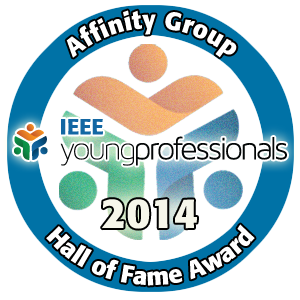 |
|
  |
Young Professionals Affinity group
Na rujanski IEEE Elevate dovodimo posve neobičnu priču o tjelesnim senzorima i glazbi.
Druženje uz predavanje će se održati u utorak 10.09. od 17 do 19h na FER-u u prostoru Kluba Studenata ElektroTehnike (KSET).
Naš gost Marco Donnaruma razvija Xth sense - biofizikalni muzički instrument koji je 'Georgia Tech Center for Music Technology' prošle godine nazvao 'najinovativnijim muzičkim instrumentom na svijetu'. Njegov uređaj spada među HCI (Human Computer Interaction) senzore koji informacije ne prikupljaju sa vanjskih dimenzija i pokreta tijela nego iz njega - ovaj put iz samih mišića.
U svom predavanju će predstaviti tehnologiju koja stoji iza ovog open source (GPL 3.0) hardverskog projekta te otvoriti pitanja o snazi poruke koja se može formirati temeljem informacija iz ljudskog tijela. Marco trenutno završava doktorski studij EAVI (Embodied Audio Visual Interaction) na Sveučilištu Goldsmiths u Londonu, a predavanja i performanse je održao u preko 40 zemalja.
Na web stranicama 'Create Digital Music' magazina možete pronaći zanimljiv interview s Marcom uz snimke Xth sense performansa.
Ovaj događaj organiziramo u suradnji sa udrugom KONTEJNER | biro suvremene umjetničke prakse, a to je naš drugi zajednički projekt nakon vrlo uspješnog gostovanja kalifornijskog umjetnika i edukatora Kala Spelleticha 2008. godine.
Tinkering bodies: physicality, biotechnologies, and the politics of musical performance
“By embodiment... I mean not simply physical presence, although that is certainly one relevant facet... by embodiment I mean a presence and participation in the world, real-time and real-space, here and now. Embodiment denotes a participative status, the presence and occurrentness of a phenomenon in the world (Dourish, 2001).”
In 2004, Paul Dourish’s book Where the Action Is: The Foundations of Embodied Interaction (Dourish, 2004) was drastically successful in spreading a new view of Human-Computer Interaction (HCI). Drawing on the philosophical conception of embodiment, Dourish put forth a new definition of our interaction with machines, what he called ‘embodied interaction’. The novelty of his approach lied in that he recognised that being ‘embodied’ users of interactive technologies meant much more than simply possess a physical presence. Following this model, body-based interactive technologies have proliferated. But rather than prompting for the pursue of new prospects of embodiment, the eagerness and easiness of creating technological instruments has produced a view of the body as pure subject matter in isolation from both intellectual activity and the world it participates in. Biological and inertial sensors measure the body size, speed, orientation and its dimensional features are translated in numbers that a computer can understand. It is certainly a good representation of a physical body, but does it represent ‘physicality’ in its completeness? Can we call this interaction ‘embodied’? What those sensors do not tell us about the body?
In this talk, I will explore another definition of physicality: the capacity of a body to enacts our intellectual and social abilities. I will advance a framework of ideas and biotechnological musical instruments built upon a cultural and social understanding of the body. I will argue that a player’s body is a political entity and body-based music performance produces political messages. The main question I will ask is: How can we make the design of body-based musical instrument and performance with technologies politically significant?
References
Dourish, P.
2001. Seeking a Foundation for Context-Aware Computing Corresponding Author s Contact Information : Department of Information. HUMAN-COMPUTER INTERACTION, 16:229-241.
Dourish, P.
2004. Where the action is: the foundations of embodied interaction. Cambridge, Mass: MIT Press.

